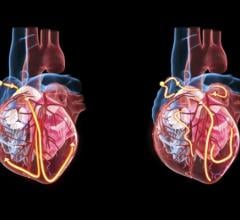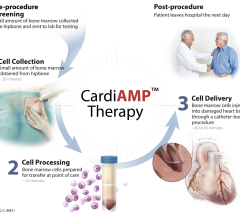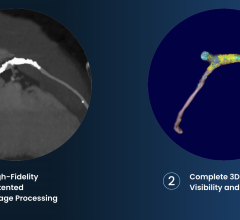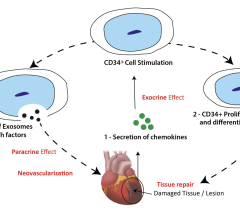
December 20, 2011 – After a heart attack, the portions of the heart damaged by a lack of oxygen become scar tissue. Researchers have long sought ways to avoid this scarring, which can harden the walls of the heart, lessen its ability to pump blood throughout the body and eventually lead to heart failure. But new research from the University of North Carolina at Chapel Hill School of Medicine shows that interrupting this process can weaken heart function even further.
In a study appearing online Nov. 15, 2011, in the EMBO journal, the investigators observed that cells in the outer layer of the heart generated scar tissue. But when they blocked these cells from doing so, they essentially demonstrated that when fixing a broken heart, timing may be everything.
“We now know that scarring is a good thing, because it prevents a precipitous decline in heart function immediately after heart injury,” said Arjun Deb, M.D., senior study author and assistant professor of medicine and cell and molecular physiology at the UNC School of Medicine. “The question is not whether, but when it makes the most sense to manipulate the cells of the heart to decrease scarring and enhance regeneration.” Deb is also a member of UNC’s McAllister Heart Institute and the Lineberger Comprehensive Cancer Center.
Regeneration happens naturally in lower organisms like zebrafish – the striped, thumb-sized inhabitants of household aquariums – but for some reason not in higher organisms like humans. Years ago researchers noticed that a thin outer layer of cells on the surface of the heart muscle – known as the epicardium – was playing an important role in regenerating the zebrafish heart after injury. But what role the epicardium might have in an injured mammalian heart was an open question.
By studying a mouse model of cardiac injury, Deb and his colleagues found that the epicardium of the mammalian heart was also activated after a heart attack. But unlike in zebrafish, where the epicardium contributed to generation of heart muscle cells, in the mouse the epicardium generated fibroblasts –– the fibrous cells that underlie scar tissue.
The researchers then found that a protein called Wnt1, which they had formerly shown to enhance function of human vascular stem cells, was driving stem cells within the epicardium to become fibroblasts. They wondered if interrupting this molecular pathway could ameliorate scarring and improve heart function. Surprisingly, when they interrupted Wnt1 signaling in genetically engineered mice, the mutants developed heart failure within 2 weeks after cardiac injury.
“There are clearly evolutionary parallels between the zebrafish and the mouse, but there must be some sort of a selection pressure in mammals to respond to heart injury by scarring, because if we interrupt this process then the heart quickly fails following injury,” said Deb. “In organisms where there is a high pressure of blood flow, these cells may need to turn into scar tissue to maintain the tensile strength of the heart wall and prevent catastrophic rupture.”
Now Deb and his colleagues are genetically manipulating the stem cells residing in the epicardium at later time points to see if they can coax them to stop turning into fibroblasts and start forming heart-regenerating myocytes. If so, the approach could prove to be an invaluable way to help patients recover from a heart attack.
The research was funded by the National Institutes of Health and Ellison Medical Foundation. Study co-authors from UNC were Jinzhu Duan, Ph.D. (first author), Costin M. Gherghe, M.D., Ph.D., Dianxin Liu, Ph.D., Eric Hamlett, Luxman Srikantha, Laurel Rodgers, Ph.D., Jenna N. Regan, Mauricio Rojas, M.D., MPH, and Monte Willis, M.D, Ph.D.


 January 14, 2025
January 14, 2025 







